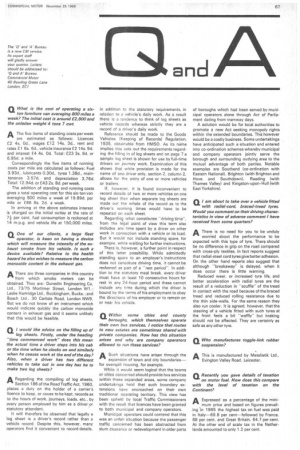n Within some cities and county
Page 69

If you've noticed an error in this article please click here to report it so we can fix it.
boroughs, which themselves operate their own bus services, I notice that routes to new estates are sometimes shared with private companies. How has this situation arisen and why are company operators allowed to run these services?
ASuch situations have arisen through the expansion of town and city boundaries— for overspill housing, for example.
While it would seem logical that the towns or cities concerned should provide bus services within these expanded areas, some company undertakings hold that such boundary extensions have encroached on their own traditional operating territory. This view has been upheld by local Traffic Commissioners with the result that licences have been granted to both municipal and company operators.
Municipal operators could contend that this was an unfair situation because the passenger traffic concerned has been abstracted from slum clearance or redevelopment in older parts of boroughs which had been served by municipal operators alone through Act of Parliament dating from tramway days.
A solution would be for local authorities to promote a new Act seeking monopoly rights within the extended boundaries. This however would be a costly business. Some undertakings have anticipated such a situation and entered into co-ordination schemes whereby municipal • and company operators jointly serve the borough and surrounding outlying area to the mutual advantage of both parties. Notable examples are Southend (co-ordination with Eastern National). Brighton (with Brighton and Hove and Southdown), Reading (with Thames Valley) and Kingston-upon-Hull (with East Yorkshire).












































































































